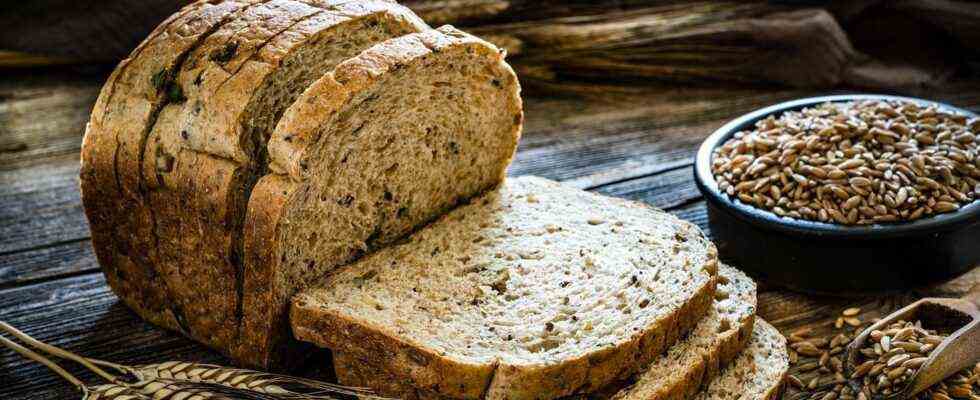Crunchy and aromatic
Bake your own bread: a quick recipe for fresh wholemeal spelled bread
Crunchy kernels and seeds give this wholemeal spelled bread an incomparable bite
Baking bread is a science in itself? Are you kidding me? Are you serious when you say that. With this recipe for an aromatic wholemeal spelled bread with kernels and seeds, you can make mankind’s oldest cultivated staple food yourself in no time at all.
Is there anything better than the smell of freshly baked bread? Hardly likely. We Germans love our bread – every German eats an average of around 70 kilograms of it a year. There are varieties like sand on the sea: more than 3000 in Germany alone. No wonder, then, that the German bread culture was recognized by Unesco as an intangible German cultural heritage in 2014 because of its unique diversity.
Bread as the oldest cultivated food
Bread is one of the most important staple foods and is one of the oldest cultivated foods in the world. The first grain was already cultivated in the Neolithic Age. At that time, einkorn and emmer were mainly used, only later did the variety of grains increase and new varieties such as wheat and barley were cultivated.
The Italian Institute for Prehistory and Protohistory even provided evidence that flour was already being produced 30,000 years ago. When examining old stone tools, the signs of wear and tear showed that they were used as mortars. Microscopic analyzes even revealed the remains of starch granules. According to this, the tools were used to grind grain.
The scientists assume that the flour was initially used to make porridge. At some point, prehistoric man must have found out that heating the porridge on a hot stone or an extinguished fireplace, for example, strengthens it, browns it and even makes it last longer. About 6,000 years ago, sourdough was created – probably from dough that was accidentally left standing, fermented and then baked. So we humans have had a grain-based diet for at least 30,000 years, with the grain porridge being baked for at least 22,000 years. Bread thus ensured the survival of our ancestors.
Seeds and kernels for plenty of nutrients and bite
So it’s no wonder that this staple food tastes so good to us. We now enjoy a wide range of varieties – whether with grains or without, gluten-free or with wheat, light, dark or rather mixed – there is almost nothing that does not exist.
Above all, seeds and kernels give freshly baked bread an irresistible bite and also ensure an attractive appearance. Last but not least, they are very nutritious and have many health-promoting ingredients. While flaxseed scores with plenty of fiber and thus stimulates digestion and keeps you full for a long time, sunflower seeds provide plenty of protein. Pumpkin seeds also have an anti-inflammatory effect. Seeds and kernels of any kind are full of unsaturated omega-3 or omega-6 fatty acids, vitamins, iron, potassium, calcium, magnesium and zinc.
Spelled gives the bread an aromatic nutty note. It is also a high-quality source of protein and provides minerals and vitamins. This is how you start the day with a good foundation.
Recipe for wholemeal spelled bread with seeds and kernels
ingredients
- 100 g pumpkin seeds
- 100 g sunflower seeds
- 30 grams of pine nuts
- 20 grams of flaxseed
- 1 cube of yeast
- 500 ml lukewarm water
- 500 g wholemeal spelled flour
- 10 grams of salt
- 2 tbsp apple cider vinegar
- Butter/margarine to grease the mold

preparation
- Preheat the oven to 180 degrees circulating air.
- Grease a 12 inch loaf tin with butter or margarine.
- Mix together the sunflower seeds, pumpkin seeds, pine nuts and flax seeds. Put a few seeds aside for sprinkling later.
- Place a handful of seeds in the mold.
- Dissolve the cube of yeast in 500ml lukewarm water. To do this, first crumble it and then mix it with a whisk.
- Mix the spelled flour with the remaining grains and add the dissolved yeast mixture.
- Add the salt and apple cider vinegar and knead everything together for at least five minutes.
- Pour the batter into the loaf pan and sprinkle with the remaining grains.
- Bake the bread in the preheated oven for about 45 minutes.
Sources: bread institute, PNAS



